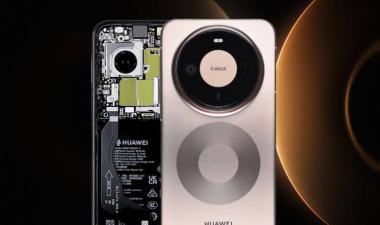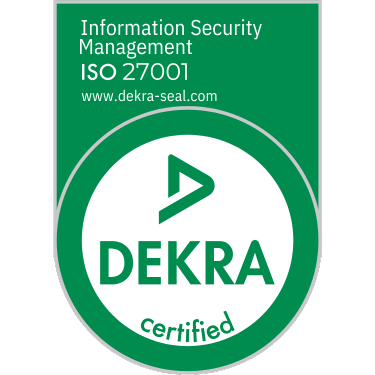Semiconductor Market Research Methodology
TechInsights' methodology for compiling information relies heavily on market simulation and consists of several approaches. The basic theme common to all is data triangulation. Wherever possible, we try to box-in an issue from at least three different directions, sometimes more.
Surveys of raw market data are made across a broad front. Basic data is obtained from both suppliers and users. Publicly available information is used in addition to the information gained by questionnaires. Annual reports and other press reports are used wherever possible to augment and validate survey results.
Technical issues and trends are obtained from surveys, technical symposia, technical journals, and trade journals. Technical proceedings of relevant symposia compared with data obtained via private industry sources. As a result, the material developed contains a wide variety of original data that is then further cross-checked and compared with published sources.
Analysis occurs on three fronts. First, a Data Analytics tool is built to closely resemble the real-world market being examined. Second, survey data is assembled to ascertain the supply side of the industry. Third, publicly available information is analyzed to cross-check survey results. Next, buyers' data is assembled to determine the demand side of the industry. Data is expanded, as our proprietary models decompress the missing pieces to gain intimate detail. All of these sources are analyzed together to triangulate specific industry issues. The data is then confirmed via a data-beta site.
Market forecasting is performed via a combination of economic tools, technological analysis, and judgment. All of TechInsights' forecasting models use causal relationships as primary driving forces. Two types of models are used for forecasting the market. One is used for short-term forecasts. The other is for long-term forecasting.
Econometric models are used for short-term forecasting. They are based on inertial driving forces such as economic or general electronic trends. Depending on the need, these may include neural network analytic approaches. The focus is mostly on business aspects such as inventories, backlogs, etc.
Technological market models are used for long-term forecasting. These are based on a merger of technological issues, economic frameworks, and business principles.
Judgmental and non-linear error analysis is added to these as time unfolds with each data set to enhance forecasting accuracy.
Available Semiconductor Market Analysis

Chip Market Research
Chip Market Research Services is a modular strategic planning, marketing, and communication tool that spans the semiconductor manufacturing industry.
- The Chip Insider® provides strategic and tactical insights.
- The Forecast Pro provides the real-time data a professional analyst needs to predict how trends in the semiconductor business environment will affect their business and investments.
- IC Equipment Databases cover market shares with annual and quarterly forecasts for these segments.

Semiconductor Analytics
Semiconductor Analytics is a weekly report addressing the semiconductor supply chain. The research and analysis is end-demand focused and has the objective of providing up-to-date business knowledge. Week-by-week data on electronics and semiconductor demand, along with monthly key performance indicators in electronics and semiconductor application markets are provided to semiconductor suppliers.

Critical Subsystems
Critical Subsystems covers the market on subsystems for semiconductor and related production equipment. These subsystems have been developed to address specific applications and processes within these industries and are dedicated for use on a single tool or process chamber. They perform a particular function in the following key technology areas: Fluid Management, Integrated Process Diagnostics, Optical, Process Power, Thermal Management, Vacuum, and Wafer Handling.

Test Connectivity Systems
Annual analytics reports that cover test connectivity markets, suppliers, and key customer trends. They include Probe Card, Test & Burn-in Socket, and Device Interface Board (DIB) market analyses.

Spreadsheets and Reports
Single data spread sheets and reports are derived from subscription services and can be purchased separately. They are ideal for one-time, low cost access to the data. Data sheets and reports are available through the TechInsights Platform.

Research Methodology
The methodology used in compiling information relies heavily on market simulation and consists of several approaches. The basic theme common to all is data triangulation. Wherever possible, we try to box-in an issue from at least three different directions, sometimes more.
Huawei Mate 80 Pro Max Teardown Confirms Kirin 9030 Pro on SMIC N+3
TechInsights’ teardown of the Huawei Mate 80 Pro Max confirms the Kirin 9030 Pro on SMIC’s N+3 process and reveals major upgrades in display, cameras, and connectivity.
2026 Advanced Packaging Outlook Report
Discover the five expectations defining advanced packaging in 2026, including CPO adoption, HBM4 demand, panel and glass scaling, 3D thermal challenges, and chiplets for mobile.
Trump Approves H200 Exports: Impact on NVIDIA, TSMC & HBM
Trump’s approval of H200 exports to China could reshape GPU, packaging, and HBM markets. TechInsights analyzes supply constraints, pricing, and $40–50B demand.









